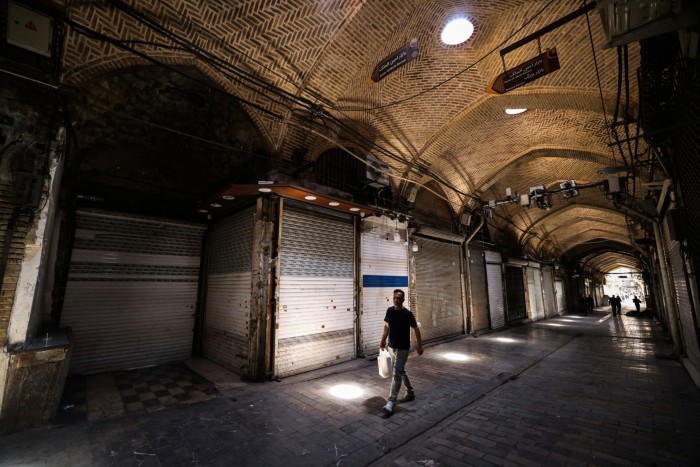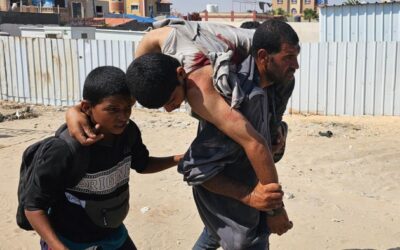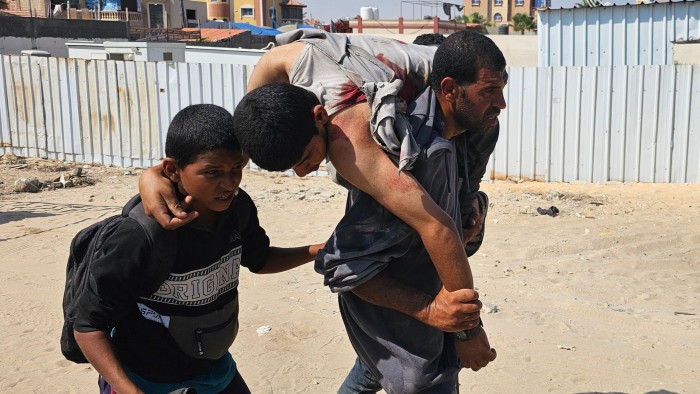Tehranis choke in gridlock and fear

Unlock the Editor’s Digest for free
Roula Khalaf, Editor of the FT, selects her favourite stories in this weekly newsletter.
Israel gave little notice in its order to evacuate District 3, the area of central Tehran that houses state television studios and other government buildings.
Within seconds of the Israeli military posting its warning to civilians, many locals fielded a deluge of calls from loved ones checking they had heard the news.
“Let’s shut off the gas and water before evacuating!” one woman shouted as she ran, suitcase in hand, down the stairs of her building.
“Hurry up, Mum, we don’t have time,” another urged her elderly mother.
An hour later, fighter jets were seen over Tehran’s suburbs; within minutes, the Iranian state broadcaster was hit.
After four days of bombing, many of Tehran’s 10mn people were already trying to flee the capital. Main roads out of the city were at a standstill. Queues for petrol stretched for miles. The stock exchange and historic Grand Bazaar had shut.
Mina tried to escape to her daughter’s house east of Tehran, but had to return home after some seven hours of gridlock. Hassan, a driver trying to ferry someone to safety out of the city, said it took nearly two hours “to cover a road that normally takes five minutes”.
Authorities have been urging people to stay put. They slowed internet speeds to control the information flow, encouraging people to follow official news channels and to ignore messages about evacuation, which they said were part of the enemy’s “psychological warfare”.
The strikes have so far killed more than 200 people and injured hundreds more, according to the health ministry, and photos of civilian casualties circulate widely on social media. Many have fled to metro stations used as makeshift bomb shelters.

Workers in banks, hospitals, and police and military stations have been directly ordered to stay in the city.
“We’re stuck here,” said Farhad, a taxi driver whose wife, a bank employee, was told to stay around on high alert for potential cyber attacks.
Food shelves are well stocked, but petrol and diesel shortages are a major concern. Authorities are restricting vehicles to a maximum of 30 litres of fuel. Officials say supply has not been cut and insist it will not be in the future.
Several of the city’s neighbourhoods lost water supply on Sunday after an Israeli strike hit a major water pipeline, flooding a key thoroughfare and killing two civilians.
Even government officials have criticised the information lockdown, which has panicked people unable to contact their families or find routes out of the capital. Deputy communications minister Ehsan Chitsaz said on X that he wished internet access had not been restricted but seemed to imply that was down to the security services. “It is not up to the ministry,” he said.

Despite many streets being orderly, some Tehranis are calling for troops to be deployed as government warnings about Israel’s collaborators fuel paranoia.
“It scares me that there is no strong police presence in the city,” said one resident. “At this time, there should be checkpoints everywhere in Tehran for us to feel secure.”
Many locals have no idea how to respond to the attacks. Tehran was targeted in the 1980s Iran-Iraq war, but since then it has grown into a modern megacity with high-rises, shopping malls and a vibrant food culture — not a city accustomed to sirens and shelters.
For children and young adults like Maryam’s 26-year-old daughter, the reality of war is new and hard to comprehend.
“She just can’t understand the concept of war and is so scared,” Maryam said.




